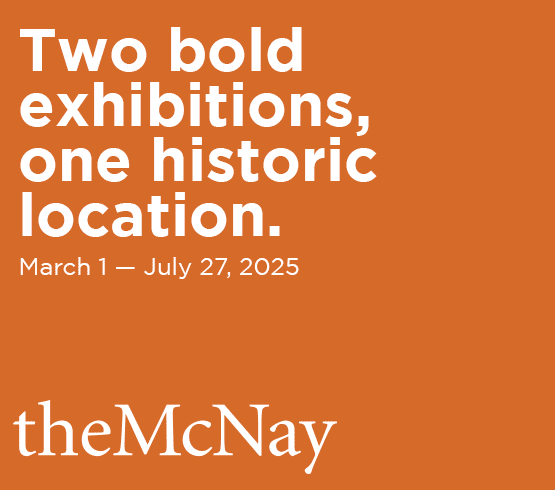As the largest wildfire in Texas history raged across the Panhandle in March of this year, Loop38, the Houston-based new music ensemble, was set to begin a multi-day residency at Stephen F. Austin State University (SFA) centered on the premiere of composer Ben Morris’s multimedia work Longleaf. Scored for brass trio, string quintet, harp, and percussion, the hour-long piece tells the story of the now endangered longleaf pine forest, the fire-dependent and fire-resistant native pine forest of East Texas. Once encompassing more than 90 million acres across the Southeast United States, longleaf pines cover less than three percent of their original range today.
“We are committed to contemporary compositions that speak to our modern lives,” says Craig Hauschildt, co-leader, percussionist, and conductor of Loop38. “We have an opportunity to talk about ecological projects that we want to see supported, to raise awareness of the landscape around us. It speaks to the people in our community differently than the traditional canonic repertoire.”
Recent ecologically minded programs have included the North American premiere of Eleanor Alberga’s Glacier and Houston composer Theo Chandler’s Music as the Ice Melts. Both works put melting ice in the conversation and made a case for action on climate change. The ensemble also performed bayou-borne by Annea Lockwood last season as part of the Buffalo Bayou Cistern’s Underground Sounds series, exploring our relationship with the natural geography of our city.
“It’s an extremely immersive and sometimes frightening experience being part of a burn,” describes Morris. “You see people dropping dots of fire on dry grasses with drip torches. You see the black smoke, the distant wall of orange flames, and animals fleeing the scene. You feel the heat charging toward you, the sheer power of the fire.”
The sounds of the burn captivated Morris. “That’s the most interesting and immersive thing for me–the soft crackling building up into crescendos of trees torching up as the fire ignites dry timber and shrubs, the flames roaring and then fizzling out as they reach the firebreaks.” Morris was standing right on the firebreak capturing all the intricacies of the sound. He witnessed the resilience of the longleaf pine and how it thrives with fire. “It’s almost like a cleansing of the land,” he reflects. The young trees survive with their buds intact while the dense thickets around the trees get burned away, leaving room for the saplings to grow and thrive.
Part of the assignment from Loop38 was for Morris to feature the brass trio (trumpet, trombone, French horn) for this commission. “The fact we are a mixed ensemble really sets us apart,” explains Hauschildt. “It’s very hard to find contemporary brass music for brass trio. It’s not a standard instrumentation. This is in large part an effort to give our brass something meaty to chew on.” The mix of strings, winds, harp, piano, and percussion that make up Loop38 allows possibilities for unique combinations in instrumentation, allowing the ensemble to build works from scratch. “It gives us an opportunity to really lean into the new in a unique way,” says Hauschildt.

1 ⁄5
Loop38 performing Ben Morris’s multimedia work Longleaf at Stephen F. Austin State University. Loop38 brings the piece to the MATCH in Houston on May 22. Photo by Ben Morris.

2 ⁄5
Loop38 members Craig Hauschildt and Jamey Kollar at the Menil Drawing Center. Photo by BEND productions.

3 ⁄5
Loop38 members Chelsea de Souza, Caitlin Mehrtens, Craig Hauschildt and Jamey Kollar at the Menil Drawing Center. Photo by BEND productions.

4 ⁄5
Craig Hauschildt conducting Loop38 at the Rothko Chapel. Photo by Natalie Gaynor.

5 ⁄5
Composer Ben Morris. Photo by Colin McKinley.
Morris combed through the East Texas Research Center’s digital archives for material related to the longleaf pine. The media elements of the piece, including historical photographs, found footage, and videos the composer captured during the composition process, interface with the music in a variety of ways. Ambisonic recordings add to the immersive experience, capturing the natural soundscape of birds, weather, and especially fire.
The heavy focus on brass was a welcome challenge for both the composer and the musicians. “Brass instruments are particularly good at depicting the majesty of trees,” says Cameron Kerl, trombonist with Loop38, referring to the sonorous singing quality often associated with brass. But Morris also took advantage of the instruments’ sound color and textural versatility, as well as their range and expressive possibilities, often using the brass in unconventional ways. He summons fire with breath amplified through the instrument, inventively layers sounds by playing with texture, and weaves passages of jazz improvisation throughout. In addition, live processing on the brass creates reverb and convolution effects that make them sound like they are in vast spaces.
“It’s been a creative challenge. There’s a lot of opportunities to present different textures and show the different things the instrument can do,” continues Kerl. He is giddy about using all but one of his many mutes for this piece, a straight mute to evoke the metallic, machine-like sound of the saw mills, the cup mute for its melancholy quality, a pixie mute, a Harmon mute, and the plunger mute for passages of jazz improvisation that accentuate the vocal effect of the instrument.
On that front Loop38 has been steadily expanding its audience base, partly by playing at unique venues. This season they’ve played thoughtfully-programmed concerts to standing-room only audiences at the Menil Drawing Institute, the Rothko Chapel, and the Lawndale Art Center (in collaboration with Nameless Sound). “It was electric,” recalls Hauschildt of one of the recent concerts. “Our repertoire is driven by the art and the space. We are responding to the space. It may be that the most important thing we do in thinking about programming is how we can make the space come alive.”
The space Loop38 is responding to could just as well be a majestic forest of longleaf pines. During the residency, the musicians, the audience, and the community will have had a chance to walk among patches of longleafs at the Sandyland Sanctuary with a forest management expert.
Morris hopes his composition will resonate deeply with listeners. “This may be a hippie cliché, but just walk outside and look up at the trees and listen to this environment. We are so detached from it, but this is where we live, this is the landscape we live in. This was the natural habitat for hundreds of thousands of years before we came. So I just want people to look up. It’s so important to our soul.”
—SHERRY CHENG





